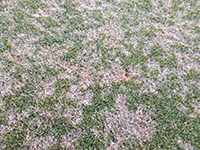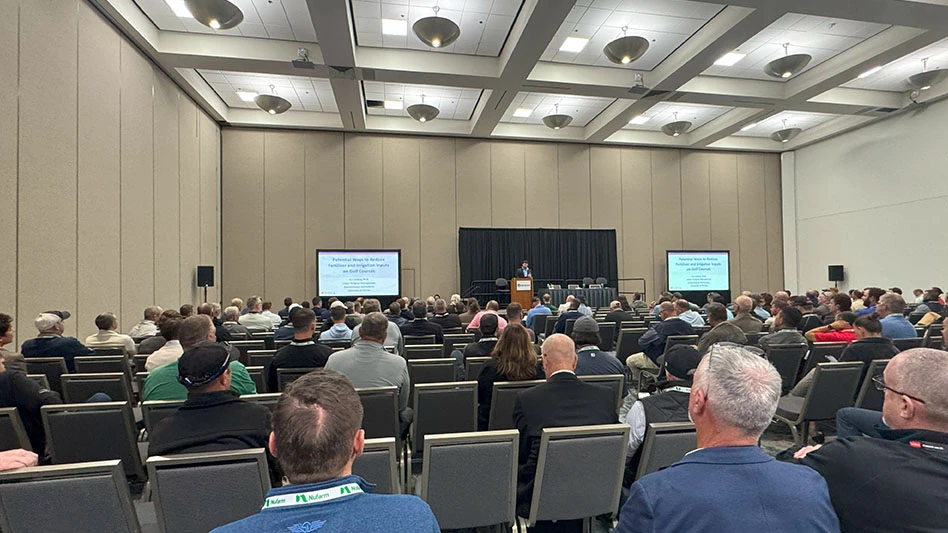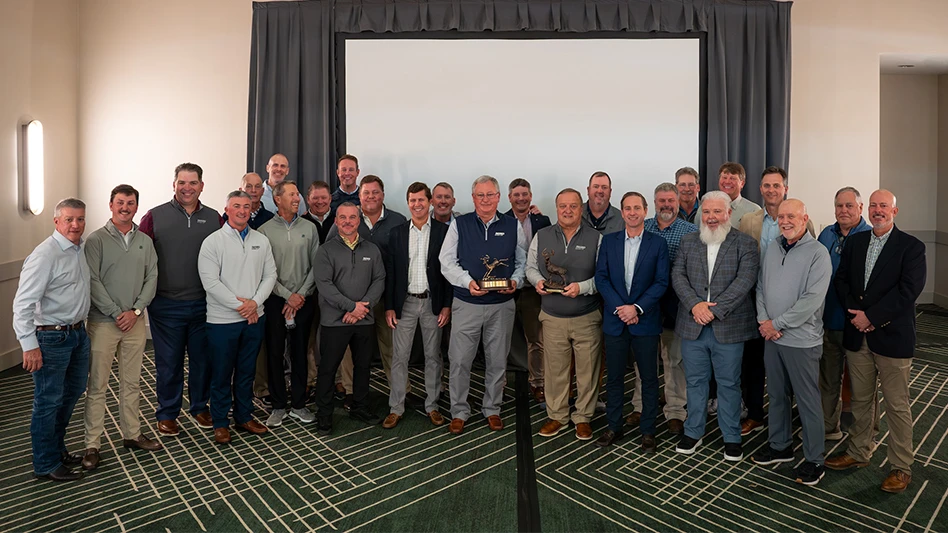
Pat Thompson has been a superintendent for 15 years, with the last 12 managing turf at Carter Caves in Olive Hill, Ky., part of the state park system.
Considering golf season in the Bluegrass State is often accompanied by warm, humid days and cool evenings, dollar spot control is a major focus for area superintendents. Carter Caves has dealt with it in “some form or fashion” every year he’s been there - some more than others, according to Thompson.
“We have Pencross with old push-up greens, a very limited budget and not much of an irrigation system, so you can say things can get pretty crazy, pretty quickly,” Thompson said. “We really keep our eyes open and watch the weather and humidity pretty close.”
While 2012 wasn’t a bad year for dollar spot at Carter Caves - “Probably a little better than most,” Thompson said - he must remain diligent and stay in front of the disease to ensure 2013 follows suit.
“Our budget is so tight, we can't vary too much from year to year, so it's pretty much the same thing every year as far as chemicals go,” he said. “We try and change it up some when we can.”
But he doesn’t count that irrigation system as an ally in that fight sometimes, he said.
“Our irrigation lines went in with the course in the early 60s, so to say they're in bad shape would be an understatement,” Thompson said. “With our irrigation not being too dependable, we do a lot of hand watering. When it gets to summer - and I'm the only full-time employee with two seasonal positions - it gets kind of tough. We may go in at 2 or 3 in the morning so we get our watering completed.”
Thompson has his fingers crossed, hoping 2013 won’t duplicate “The Summer from Hell.” Even extra hours of care won’t help at Carter Caves if the circumstances are right.
“I had to put in a couple more applications that year and really had a hard time keeping up with it,” Thompson said of 2010. “Seemed like we kept some dollar spot most of the growing season.”
The limited budget also means fairways and roughs are often at Mother Nature’s mercy. Fortunately for the putting surfaces, Thompson’s experience has taught him to keep an eye out for early warning signs.
“We have two greens that usually get dollar spot first,” he said. “It's always been that way, so most of the time I can keep my eye on those areas and catch it pretty quickly.”
When it comes to controlling dollar spot, a sound fungicide program is important, but local knowledge goes a long way, as well.
Get curated news on YOUR industry.
Enter your email to receive our newsletters.Latest from Golf Course Industry
- Ace of a decision
- Idaho course joins Concert Golf portfolio
- Central Turf & Irrigation Supply celebrates 35 years in the industry
- Musser Turfgrass Foundation honors University of Georgia researcher
- Riviera CC donates $1 million for fire relief
- Bernhard and Company names North American Distributor of the Year
- Golf course architecture firms merge to create Smyers Coyne Craig
- A week of success





